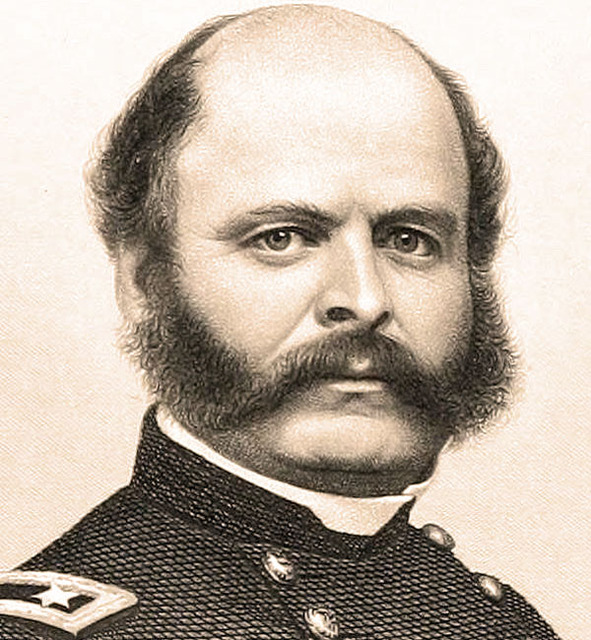 That old corny, country variety show Hee Haw had a recurring segment called, “Gloom, Despair and Agony on Me.” Each week, hillbilly sad sacks laid around a cabin porch and wailed a woebegone song that included the line, “If it weren’t for bad luck I’d have no luck at all.” Then they would let loose a blast of yokel misery.
That old corny, country variety show Hee Haw had a recurring segment called, “Gloom, Despair and Agony on Me.” Each week, hillbilly sad sacks laid around a cabin porch and wailed a woebegone song that included the line, “If it weren’t for bad luck I’d have no luck at all.” Then they would let loose a blast of yokel misery.
That was just a comedy sketch. But the man we’re about to meet could have sung those words and meant them. Because if anybody was ever born under an unlucky star, Ambrose Everett Burnside was it.
It’s not that Burnside was a bad guy. Far from it. But he couldn’t have caught a lucky break if he paid for it.
Born in Indiana in 1824, he grew up in Rhode Island (which, apart from Newport, is pretty unlucky itself). He had a typical upbringing for his era, and even graduated from West Point. So far, so good, right?
Then things went rapidly downhill from there.
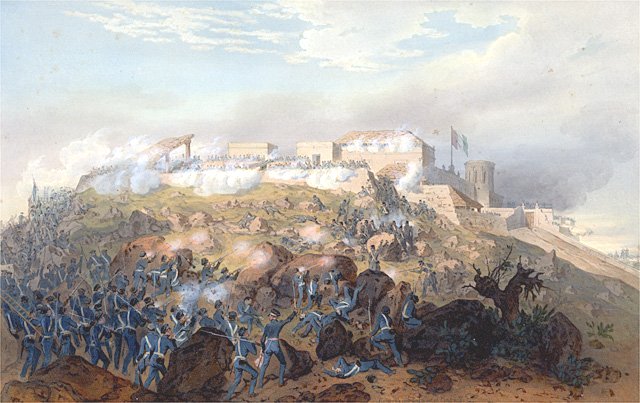 Burnside joined the army as a Second Lieutenant – just in time for the Mexican War. He immediately headed off for the action south of the border … and was cleaned out by gamblers on an Ohio River riverboat along the way. He arrived after the fighting was over, and was stuck pulling guard duty in Mexico City.
Burnside joined the army as a Second Lieutenant – just in time for the Mexican War. He immediately headed off for the action south of the border … and was cleaned out by gamblers on an Ohio River riverboat along the way. He arrived after the fighting was over, and was stuck pulling guard duty in Mexico City.
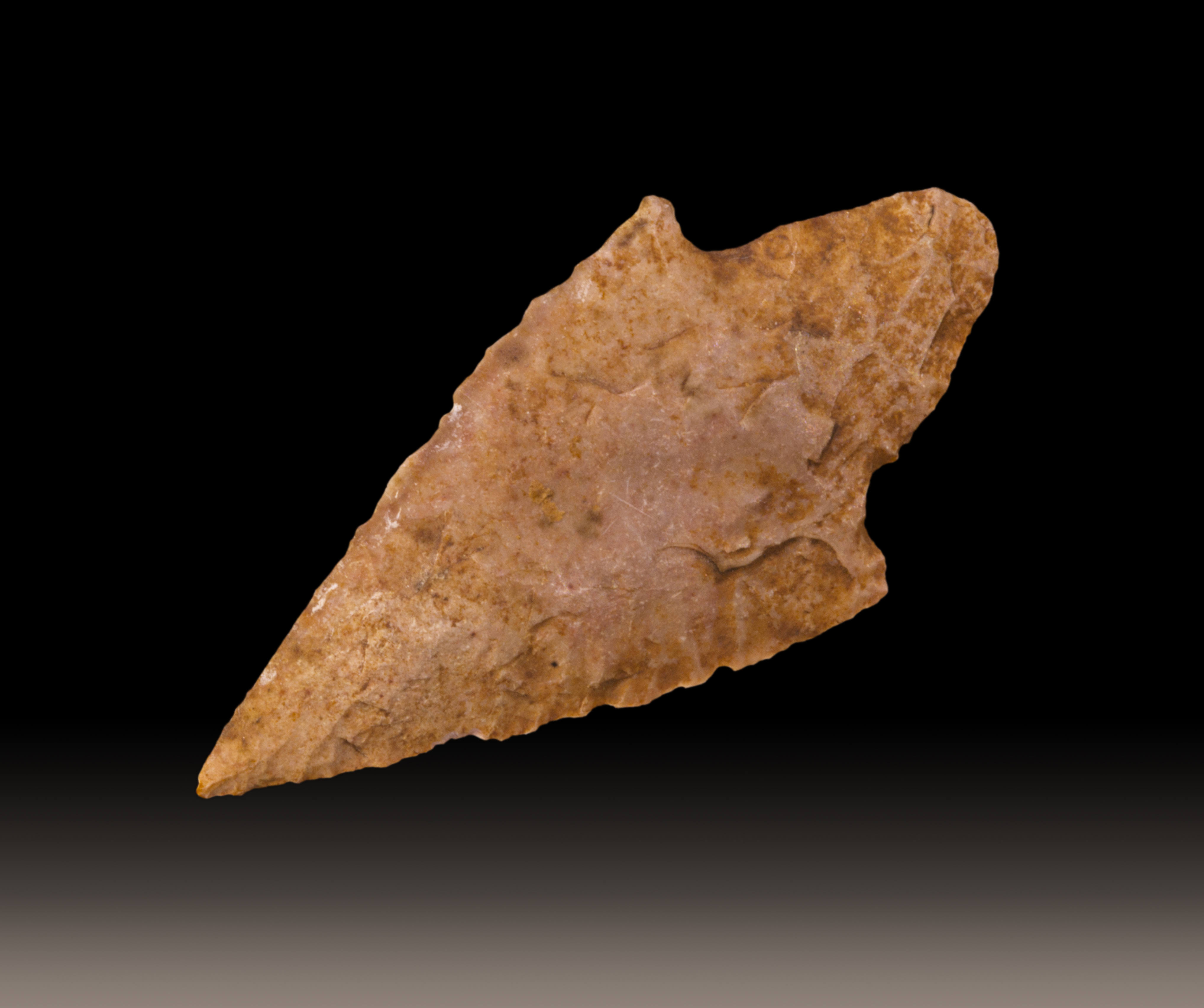 Switching to the cavalry, he spent the next few years chasing Indians around the southwest, and was rewarded with an arrow shot into in his neck for his efforts.
Switching to the cavalry, he spent the next few years chasing Indians around the southwest, and was rewarded with an arrow shot into in his neck for his efforts.
In 1853, he took off the uniform, went home to Rhode Island, met a nice woman and proposed. During the wedding ceremony, when the minister asked the traditional question, she answered, “No,” and left him standing at the altar. (Notice a trend yet?)
 Undeterred by this setback, Burnside tried his hand at inventing, and to his credit he developed a very modern repeating rifle called the Burnside Carbine. He founded the Burnside Arms Company to produce and sell them … whereupon his usual pattern of failure returned. Good as it was, the gun was just too expensive for the cash-strapped U.S. government of the late 1850s to afford. Burnside ran for Congress, and of course lost. Then his gun factory burned down, and with it went all his money. To pay off his creditors, he sold the patents to his firearms – right as the Civil War was about to break out. Washington then bought thousands of the guns, the guy who bought the patents made millions, and Burnside was left holding the bag.
Undeterred by this setback, Burnside tried his hand at inventing, and to his credit he developed a very modern repeating rifle called the Burnside Carbine. He founded the Burnside Arms Company to produce and sell them … whereupon his usual pattern of failure returned. Good as it was, the gun was just too expensive for the cash-strapped U.S. government of the late 1850s to afford. Burnside ran for Congress, and of course lost. Then his gun factory burned down, and with it went all his money. To pay off his creditors, he sold the patents to his firearms – right as the Civil War was about to break out. Washington then bought thousands of the guns, the guy who bought the patents made millions, and Burnside was left holding the bag.
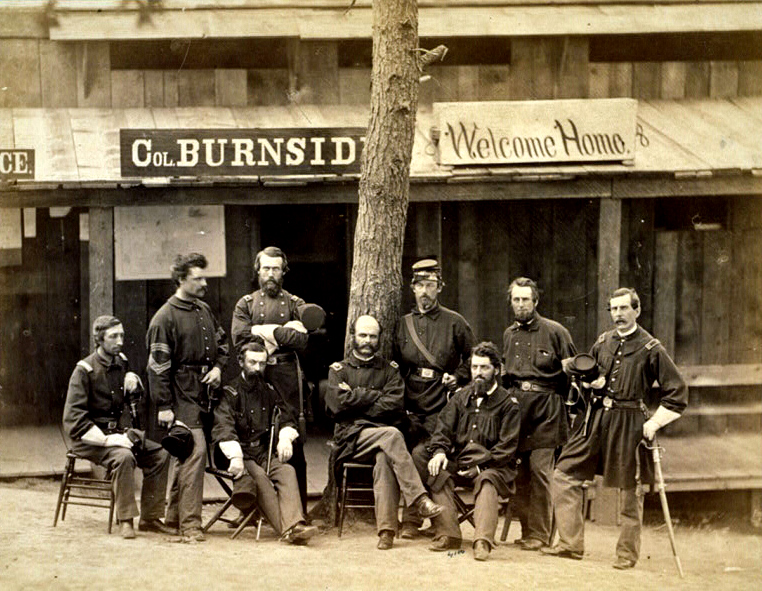 The War Between the States was the next stop on Burnside’s path of failure (and where he really did it up big). Being a West Pointer, he was quickly made a colonel in the Union army … and then kept rising higher and higher with more and more general’s stars.
The War Between the States was the next stop on Burnside’s path of failure (and where he really did it up big). Being a West Pointer, he was quickly made a colonel in the Union army … and then kept rising higher and higher with more and more general’s stars.
Now, here’s the thing about Ambrose Burnside: he naturally, and without effort, presented the aura of a guy who had it all together. When people met him for the first time, they came away thinking, “Wow!” It’s not that he tried to deceive or pull the wool over anybody’s eyes; quiet, personally decent and almost soft spoken, he nonetheless gave off a successful vibe that left people in awe. But an officer who served under him said, “You had to be around him for a while to realize he just wasn’t that smart.”
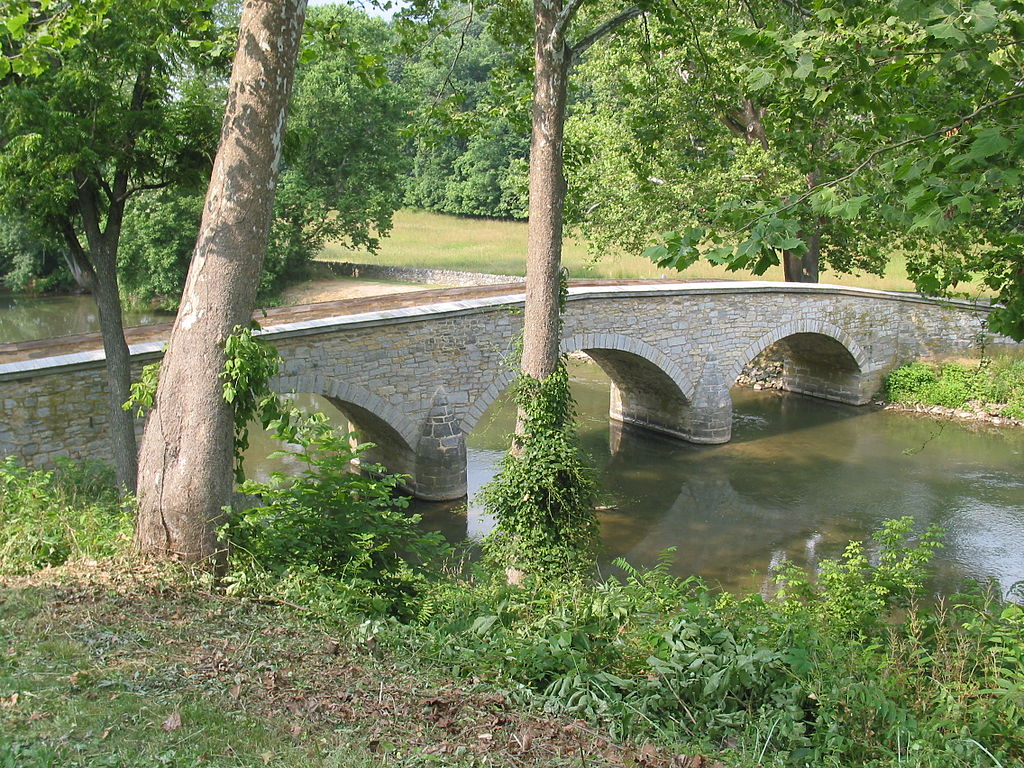 He proved that with the blood of his soldiers in September, 1862 at the Battle of Antietam, when he ordered repeated attacks across a beautiful stone bridge (now known to history as “Burnside’s Bridge”). Some 450 Georgians on the hilltop opposite it held off 14,000 Union troops for hours during charge after charge, killing a lot of good men. Only later did someone discover you could easily wade across the creek a short way downstream, avoiding the Rebel stronghold.
He proved that with the blood of his soldiers in September, 1862 at the Battle of Antietam, when he ordered repeated attacks across a beautiful stone bridge (now known to history as “Burnside’s Bridge”). Some 450 Georgians on the hilltop opposite it held off 14,000 Union troops for hours during charge after charge, killing a lot of good men. Only later did someone discover you could easily wade across the creek a short way downstream, avoiding the Rebel stronghold.
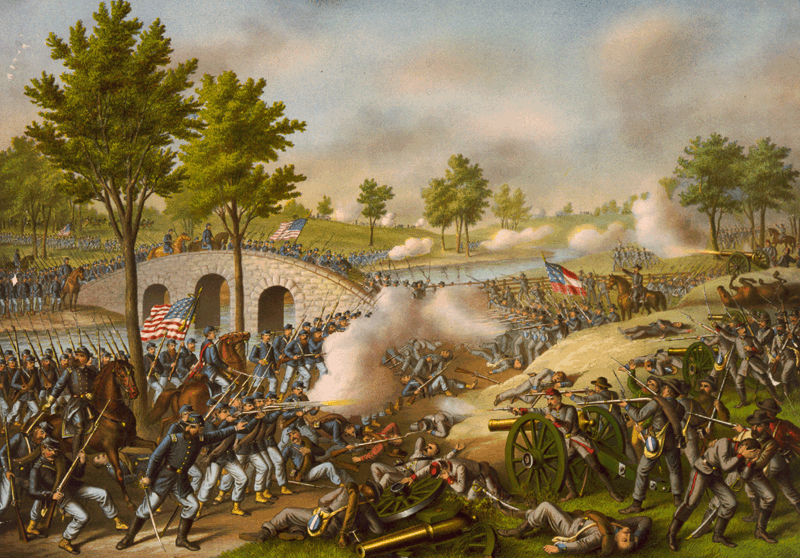 Then, on the heels of that disaster, President Lincoln made Burnside commander of the entire Army of the Potomac! I can’t find the exact quote, but historian Bruce Catton wrote something very close to, “It was to Burnside’s eternal credit that he told Lincoln he wasn’t up to the job, and to Lincoln’s eternal discredit that he didn’t listen to him.”
Then, on the heels of that disaster, President Lincoln made Burnside commander of the entire Army of the Potomac! I can’t find the exact quote, but historian Bruce Catton wrote something very close to, “It was to Burnside’s eternal credit that he told Lincoln he wasn’t up to the job, and to Lincoln’s eternal discredit that he didn’t listen to him.”
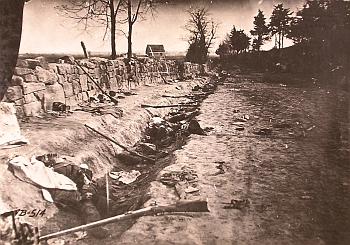 Because less than 90 days after the bloodbath at Burnside’s Bridge in Maryland, he hurled the entire Union army uphill at entrenched Confederates waiting for them in the Battle of Fredericksburg, Virginia. The result: 12,653 men were mowed down in a few hours.
Because less than 90 days after the bloodbath at Burnside’s Bridge in Maryland, he hurled the entire Union army uphill at entrenched Confederates waiting for them in the Battle of Fredericksburg, Virginia. The result: 12,653 men were mowed down in a few hours.
Burnside was then bounced from one second tier 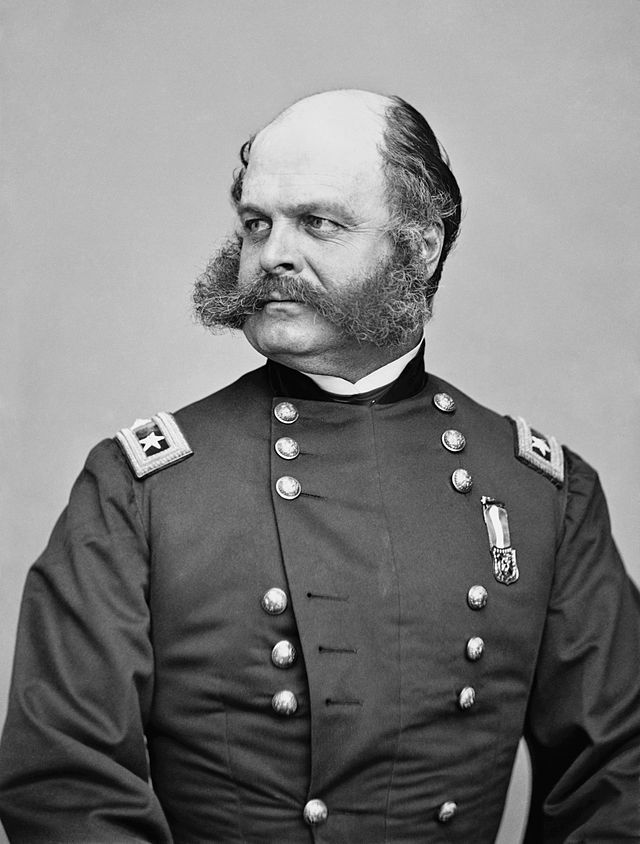 command to another for the remainder of the war. He was in Washington when Lee surrendered, and decided to celebrate the end of the conflict by going to see a play. Yup, you guessed it: he was sitting directly below Lincoln’s box in Ford’s Theatre when John Wilkes Booth crept up from behind. In fact, the president was looking down at the time, and Burnside was among the last faces Lincoln ever saw.
command to another for the remainder of the war. He was in Washington when Lee surrendered, and decided to celebrate the end of the conflict by going to see a play. Yup, you guessed it: he was sitting directly below Lincoln’s box in Ford’s Theatre when John Wilkes Booth crept up from behind. In fact, the president was looking down at the time, and Burnside was among the last faces Lincoln ever saw.
Here’s what really boggles the mind: after this unbroken string of failure, Burnside returned to Rhode Island with his popularity intact. He was elected Governor, help found the National Rifle Association (NRA), served as national commander of the GAR (a Union veterans organization, like the VFW or American Legion), and capped it off by winning election to the Senate. He died of a heart attack in 1881 at age 57.
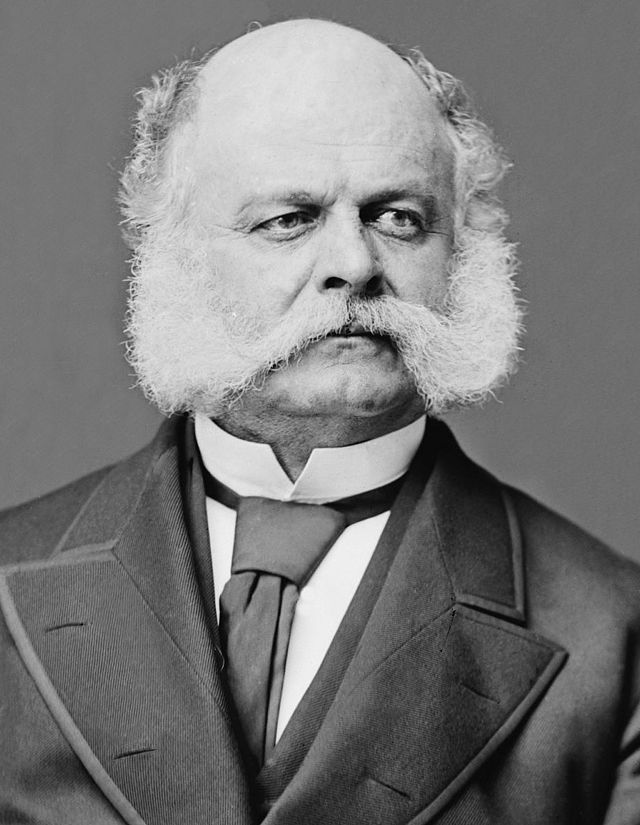 Even in death, Burnside was unlucky one last time. All his life, he was famous for the fantastic, distinctive hair worn on both sides of his face, extending down to his shaven chin. At the time, people called the style “burnsides.” But poor Burnside was denied his claim to fame. Somehow, his name was inverted: you and I know them as “sideburns.”
Even in death, Burnside was unlucky one last time. All his life, he was famous for the fantastic, distinctive hair worn on both sides of his face, extending down to his shaven chin. At the time, people called the style “burnsides.” But poor Burnside was denied his claim to fame. Somehow, his name was inverted: you and I know them as “sideburns.”
“If it weren’t for bad luck, I’d have no luck at all.” In Ambrose Burnside’s case, truer words were never sung.
Did you find this enjoyable or helpful? Please continue to join me each week, and I invite you to read Tell it Like Tupper and share your review!

Burnsides’ tactics in assaulting a fortified position at Antietam and later at Fredericksburg were strictly in accordance with Napoleonic tactical theory…exactly as he had been taught at West Point. He had more than the three-to-one margin that was supposedly “required” to take a position. But the weapons technology…primarily the rifled musket and canister shot artillery loads…had far outstripped the tactics, and made those glorious “frontal assaults” pretty much obsolete. (And absolutely foolish to attempt, though they were still being taught at West Point twenty years later.)
Robert E. Lee made the same mistake that final day at Gettysburg, ordering Longstreet to send Pickett’s brigade (among others) to attack the fortified position atop Cemetery Ridge.
Valid points, David. But military tactics aside, you can’t argue that the guy was just plain unlucky.
Wasn’t disputing your main point, Mark. In fact, when you get right down to it…when someone does EXACTLY what they’ve been taught to do, EXACTLY as they have been taught to do it…and it still screws up and adds to their reputation for incompetence, that is HORRIBLE luck, indeed!